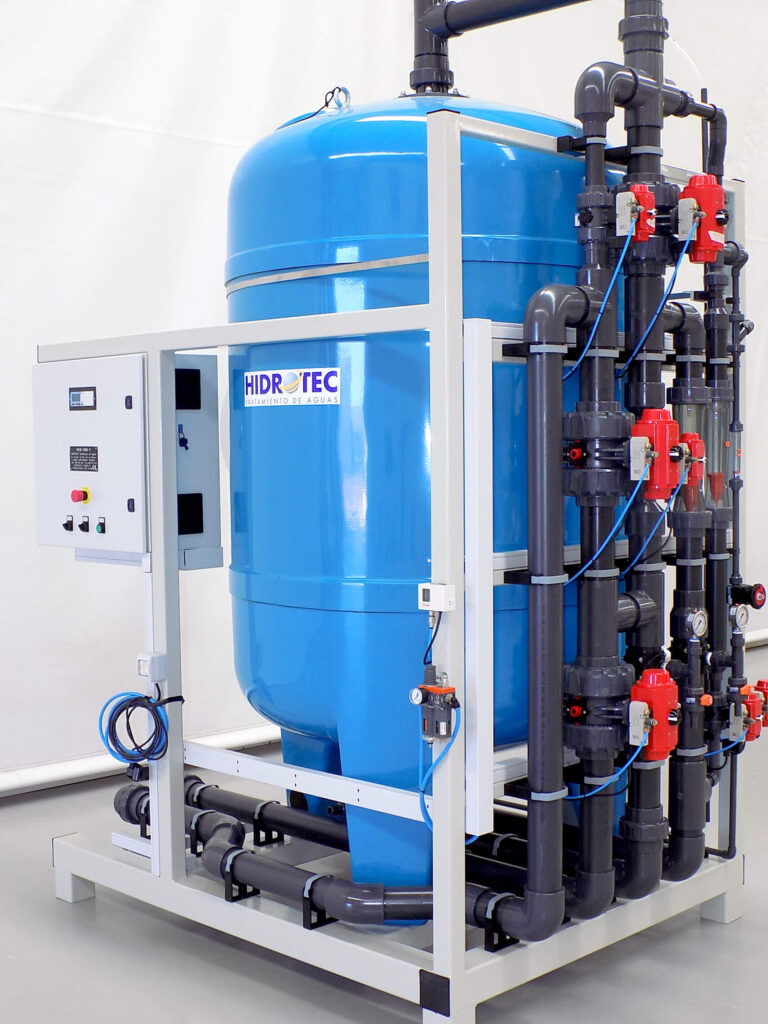
IRON AND MANGANESE REMOVAL SYSTEMS
The iron and manganese removal systems designed by Hidrotec are based on oxidation, precipitation and retention in filter media.
The iron and/or manganese are firstly oxidated by aeration, to later go through a filtration stage of pyrolusite and sand in different proportions, depending on the iron and manganese load in the water to be treated.
Pyrolusite is a manganese dioxide (MnO2) with a concentration of 75-80%. The presence of oxygen in the product supports the removal of Fe and Mn catalytically.
In general, pyrolusite is added to the surface of sand filters. Due to the high density of the product, greater than the filtering sand, it penetrates into the bed, settling after approximately 3-4 washes in a range between 500-700 mm deep. This operation stratifies the bed into 3 different layers:
– a first layer of filtering sand,
– a second layer of pyrolusite,
– a third layer of filtering sand.
The first layer (sand) has the function of retaining the particles, where part of the Fe/Mn is eliminated.
The second layer (pyrolusite), free from particle contamination, remains active to carry out the catalytic action and thus retain the Fe/Mn.
The third layer (sand) guarantees the final polishing of the effluent.
Pyrolusite does not need to be regenerated due to its high purity and catalytic function.

HEB – Boron removal systems
The treatment system for removing boron by ion selection helps to remove excess quantities of this element from any water because in certain crops, fundamentally fruit with stones or pips, it can reach a concentration that might be toxic and harmful for the plantation. This toxicity can have a greater effect when contaminated residual or underground water is used for irrigation.
The water to be treated crosses the ionic exchange resin, specially designed to remove boron in aqueous solutions so the result gives water with a 90% reduction of boron.
The exchange capacity is limited and when the resin runs out, it must be regenerated.
Resin regeneration is entirely automated and involves passing a certain concentration of acid through the resin bed, eliminating the boron held on it and making it possible to store the aqueous regeneration solution so that it can subsequently managed as a residue.












